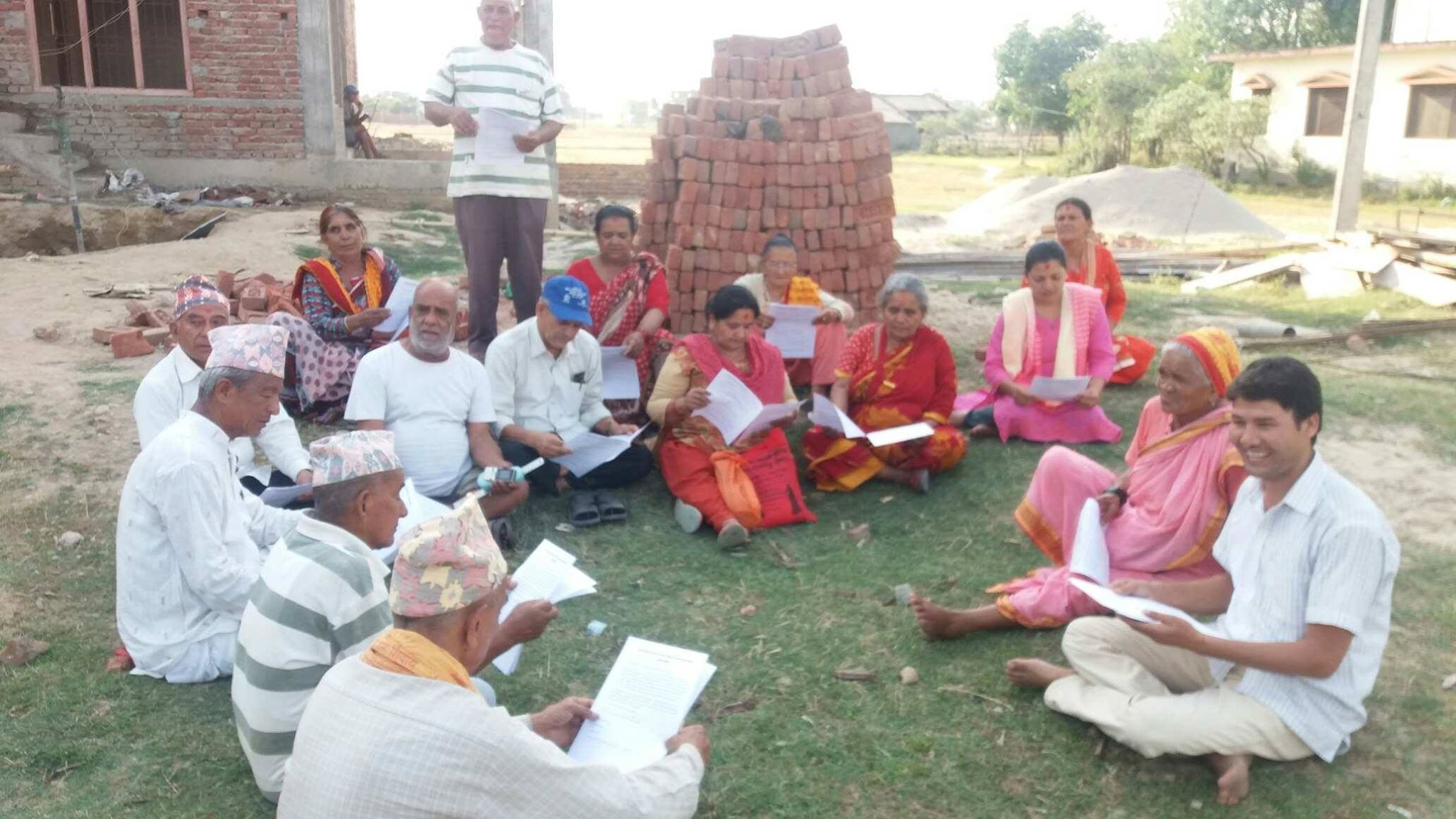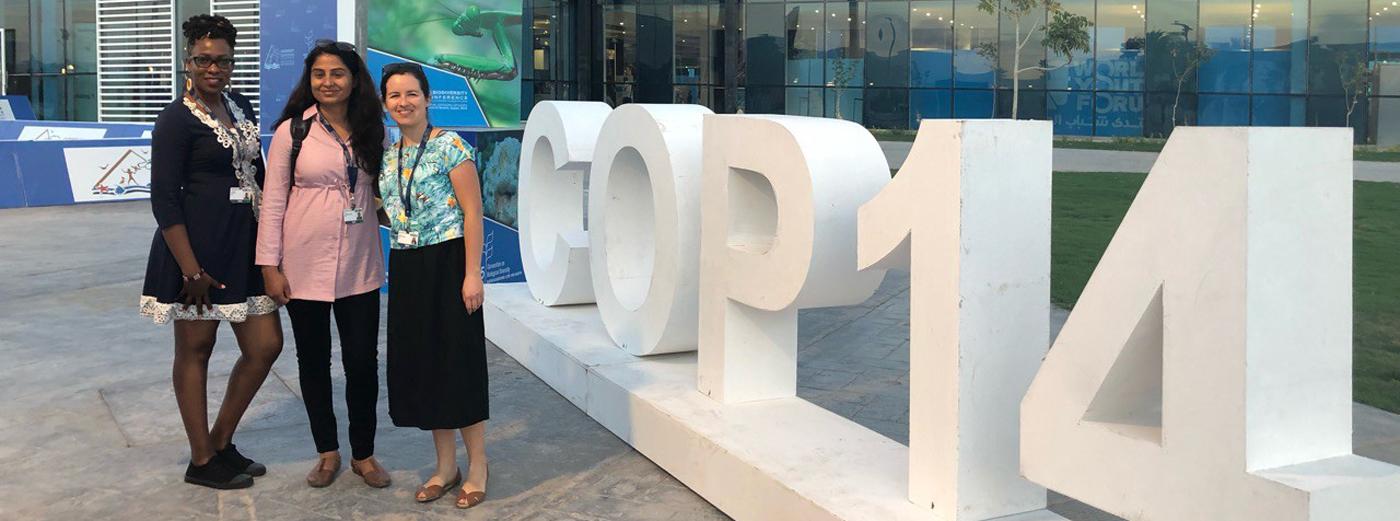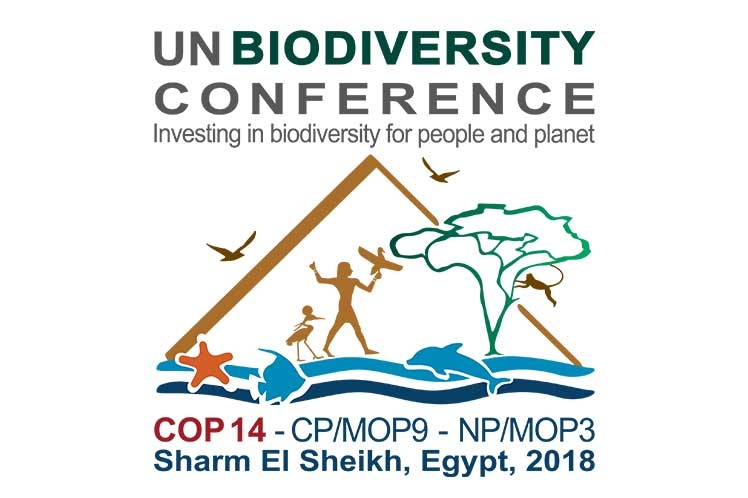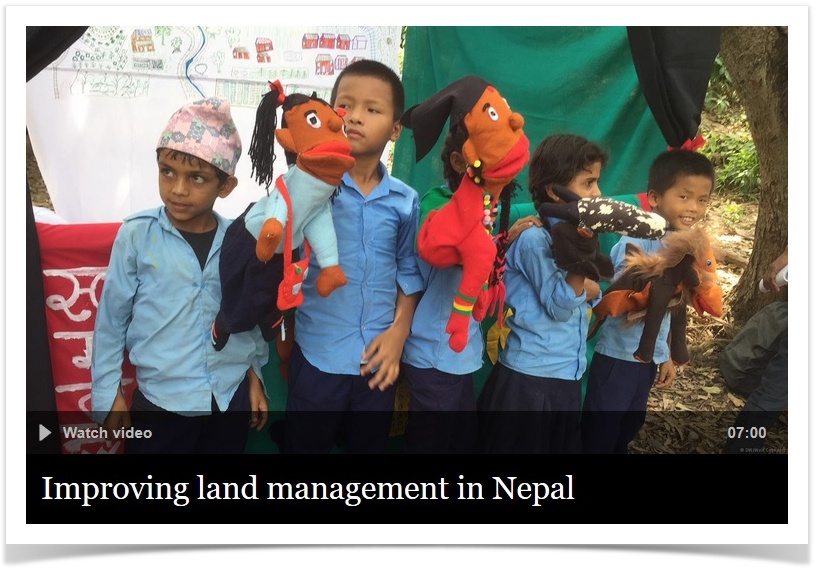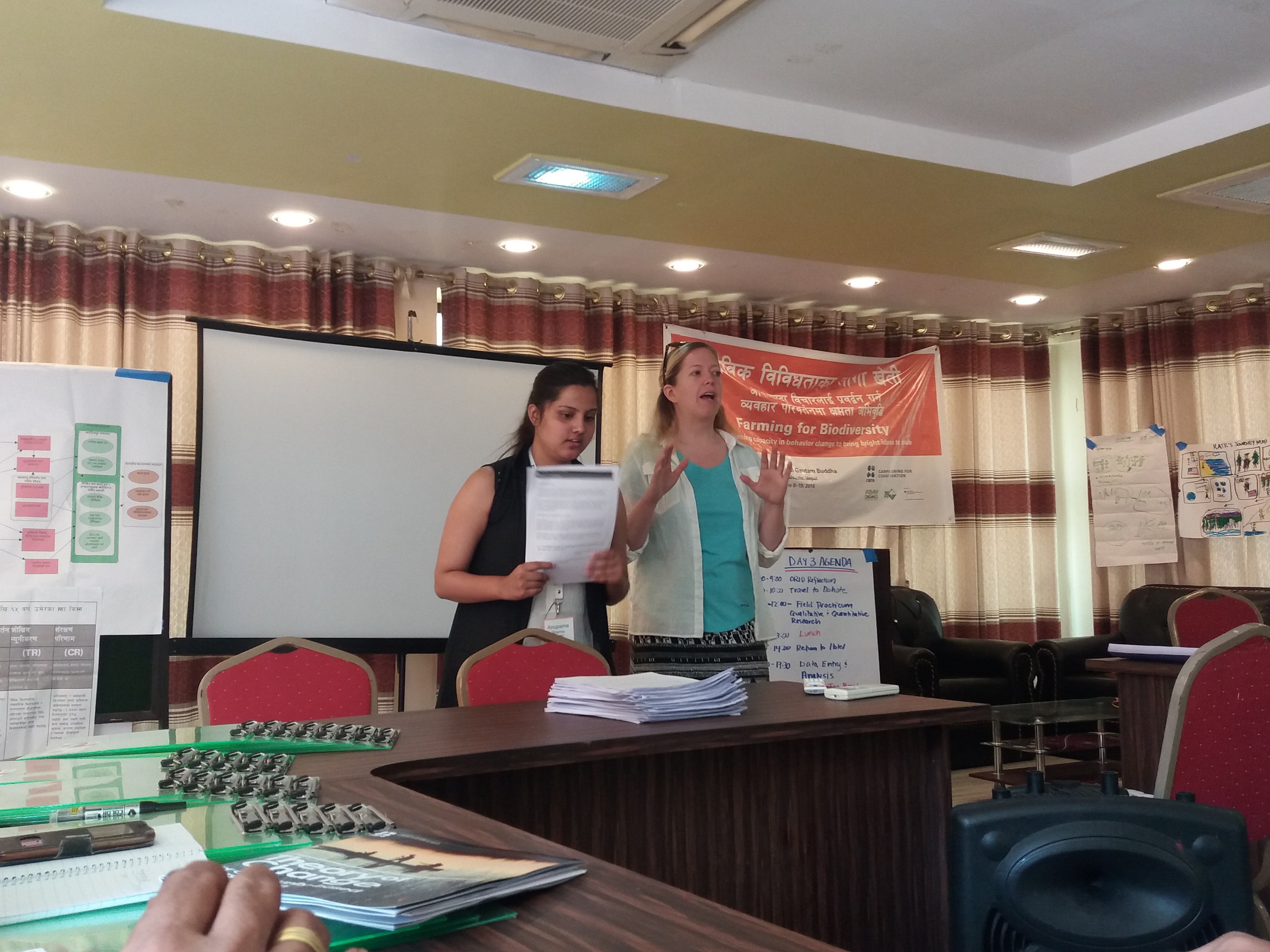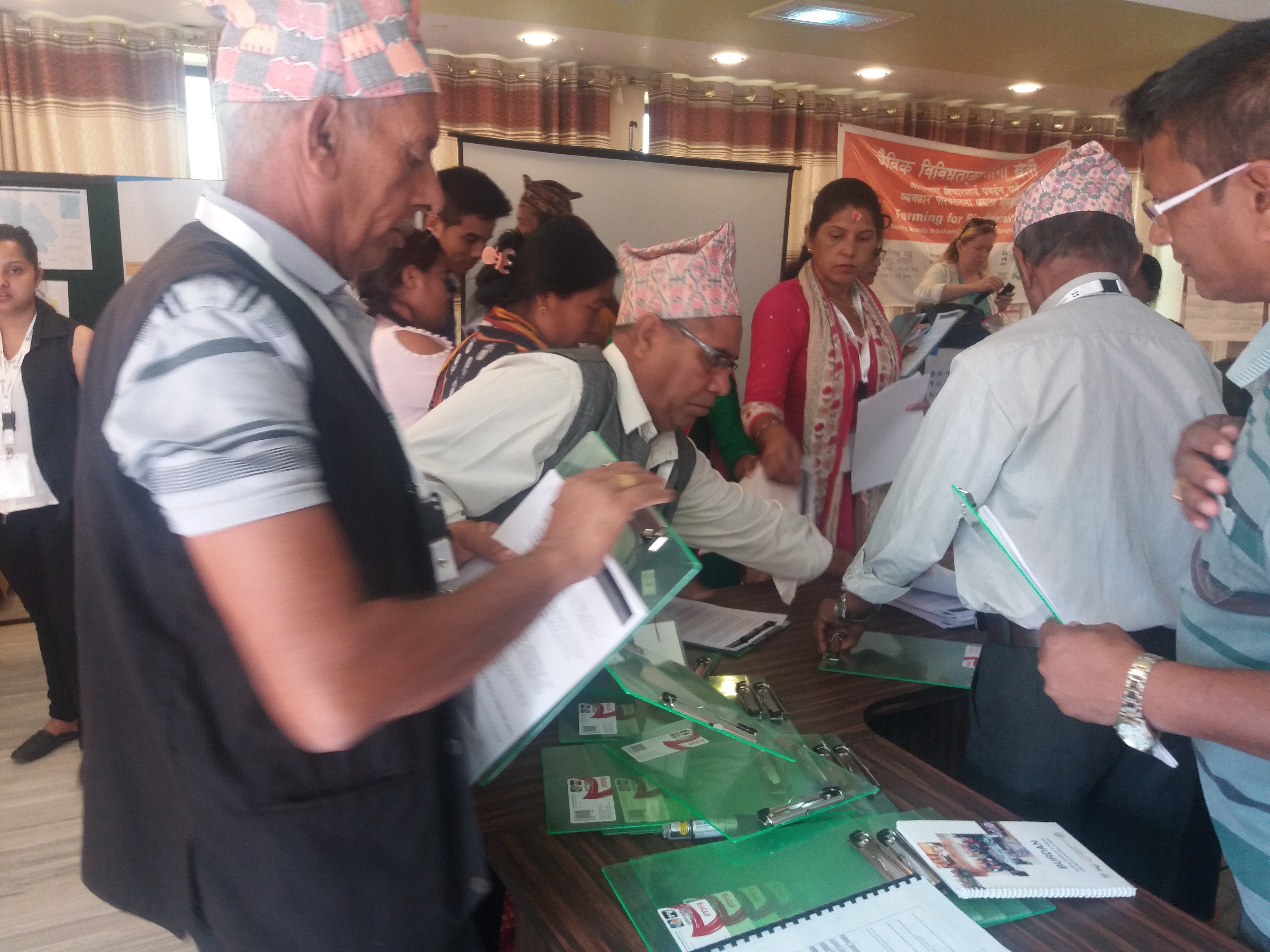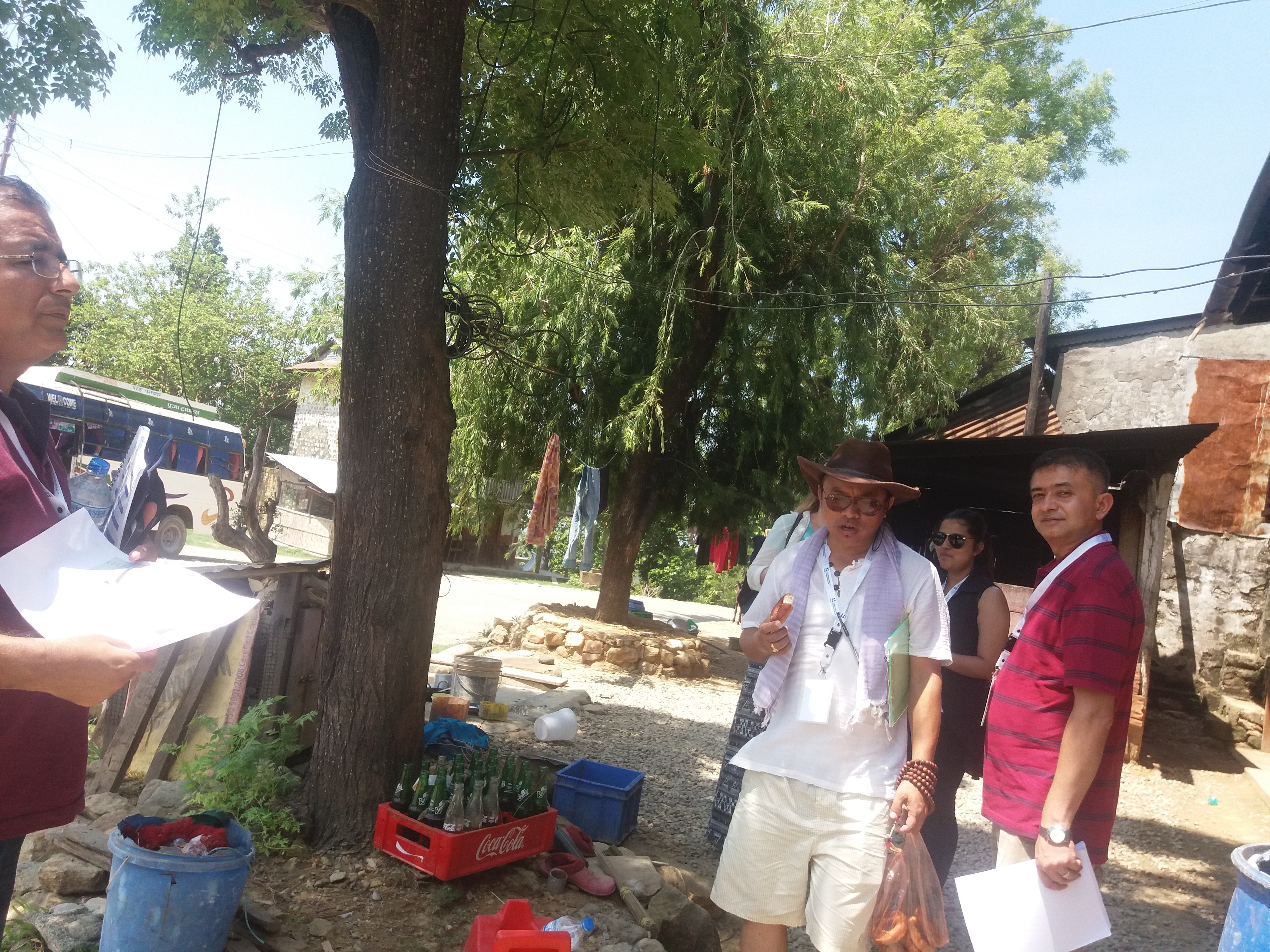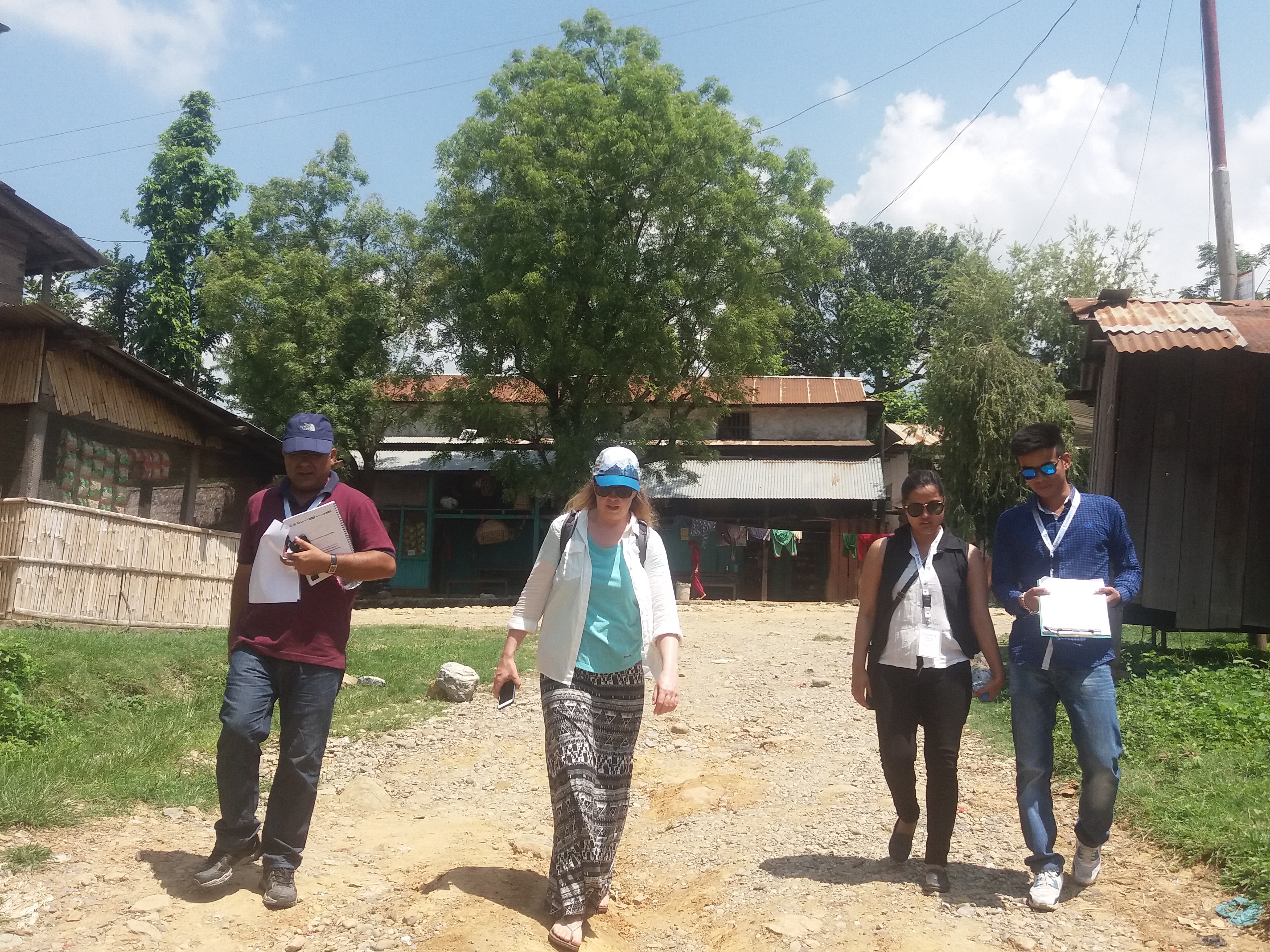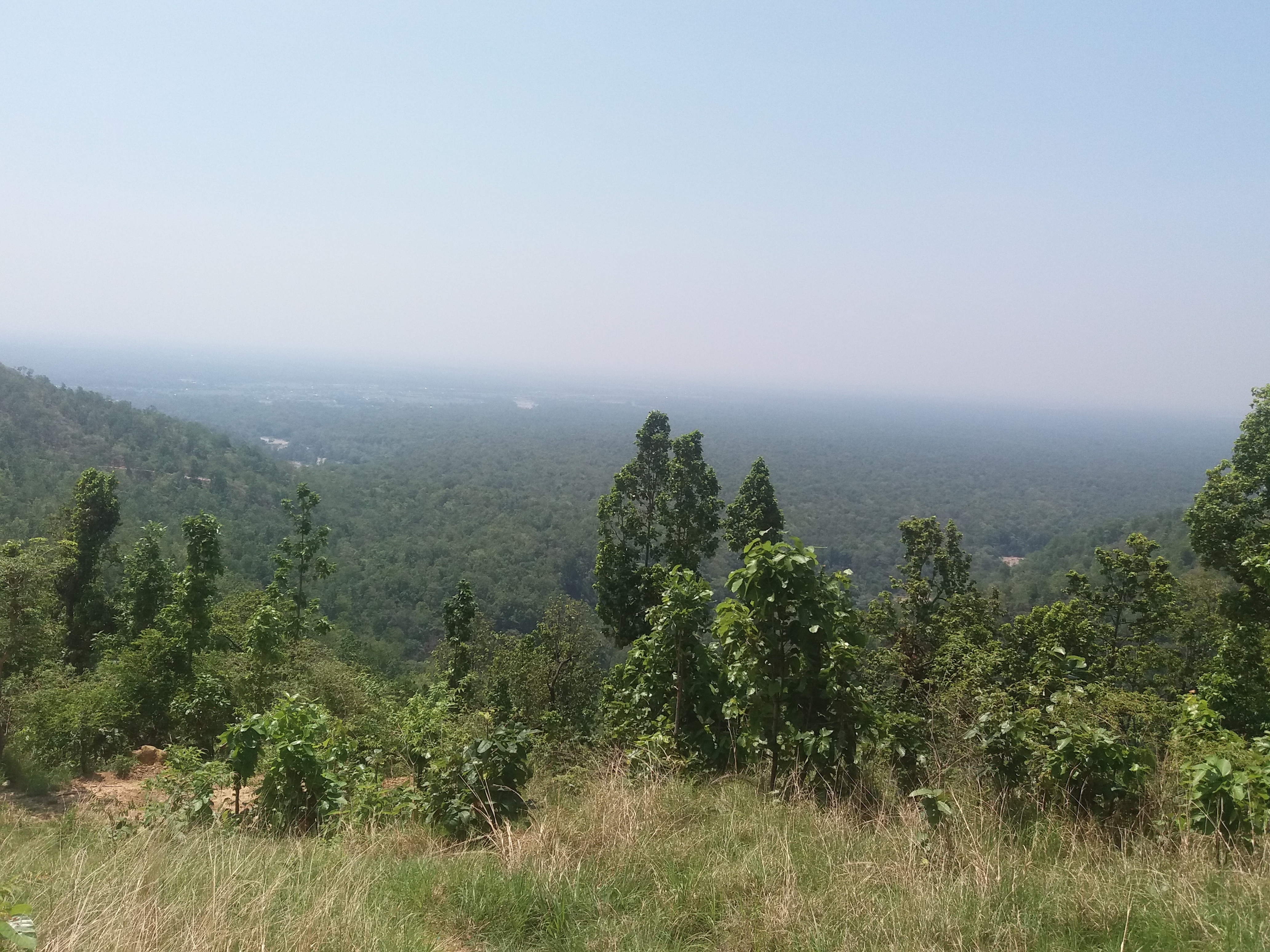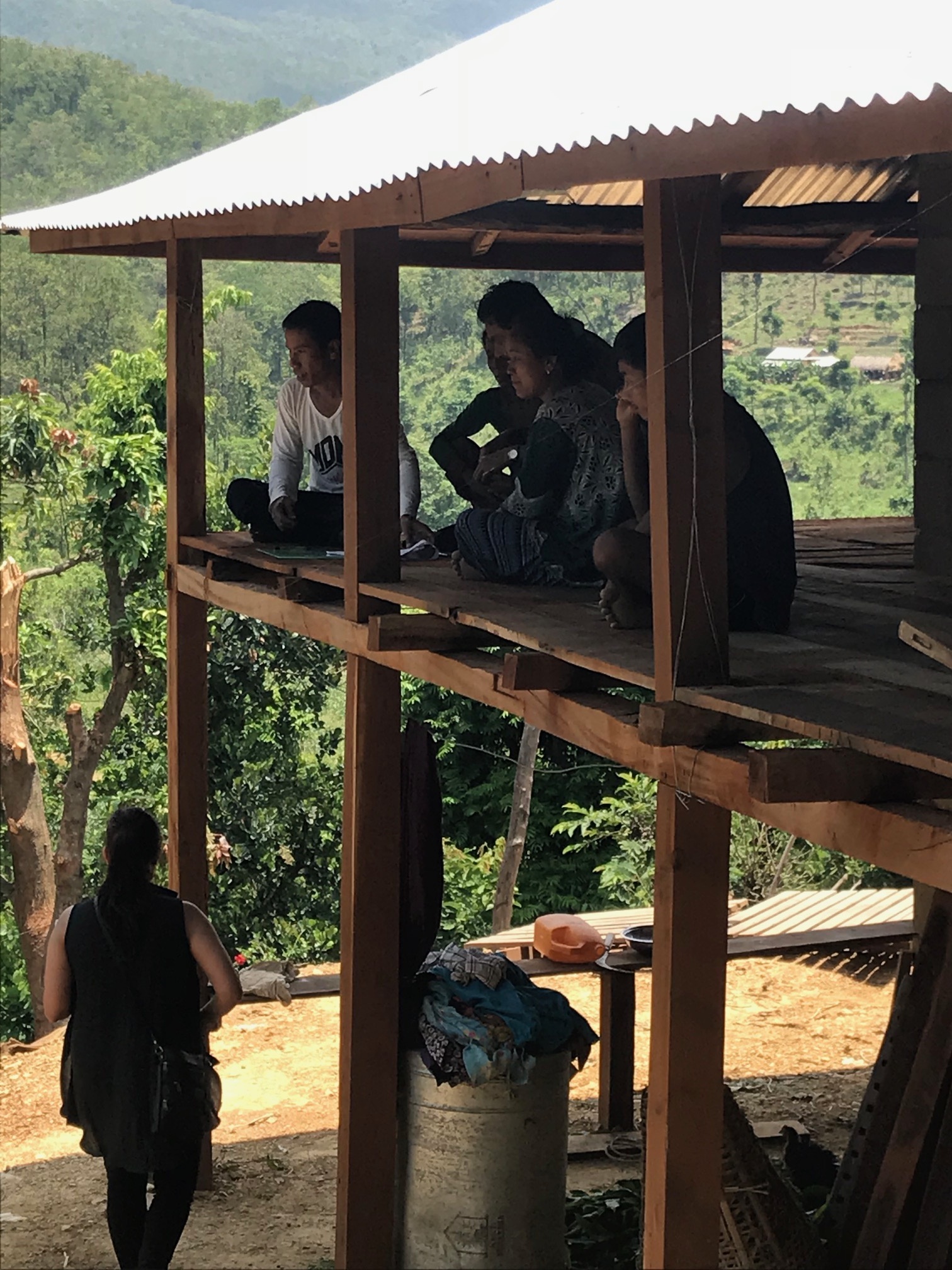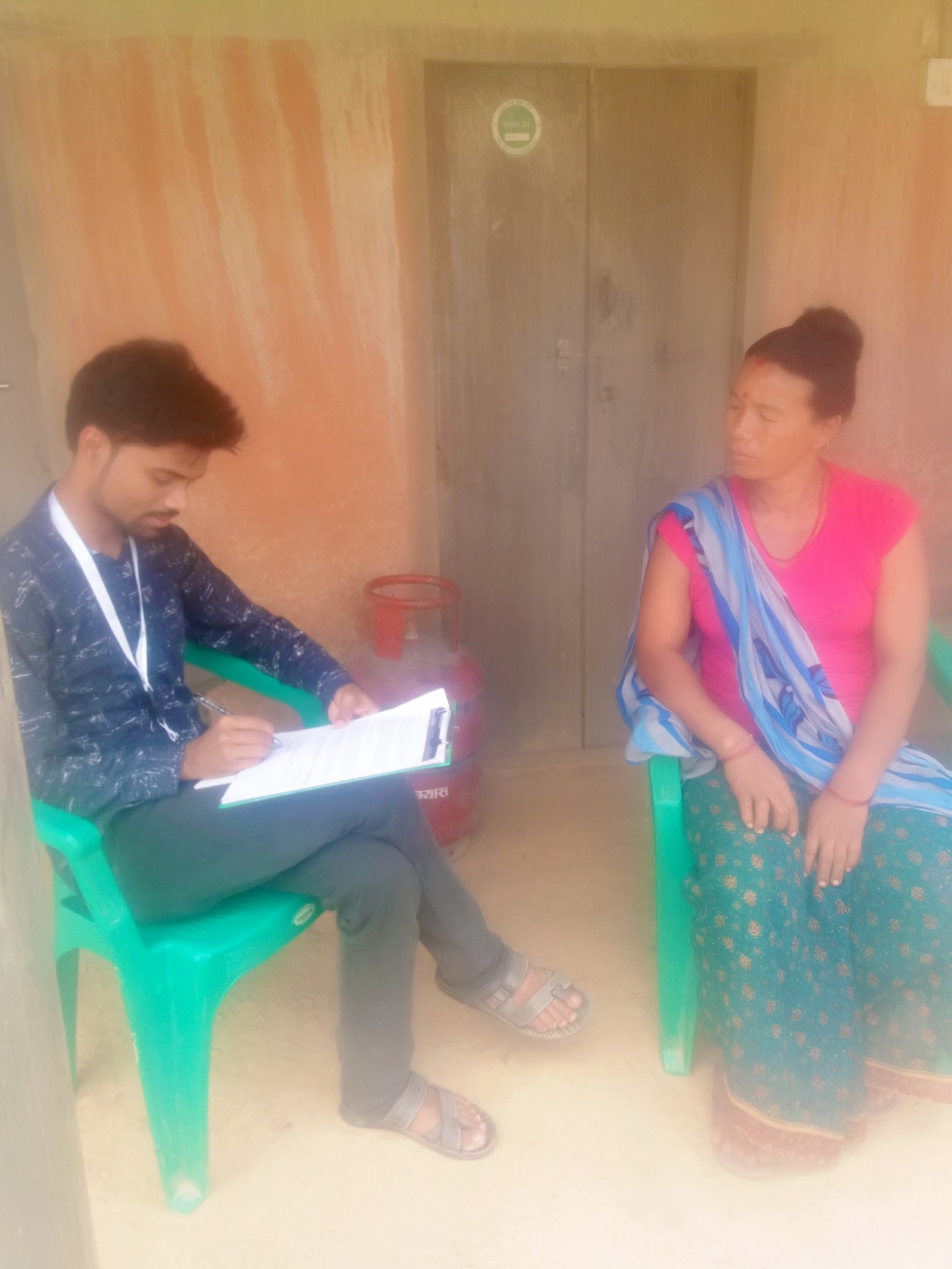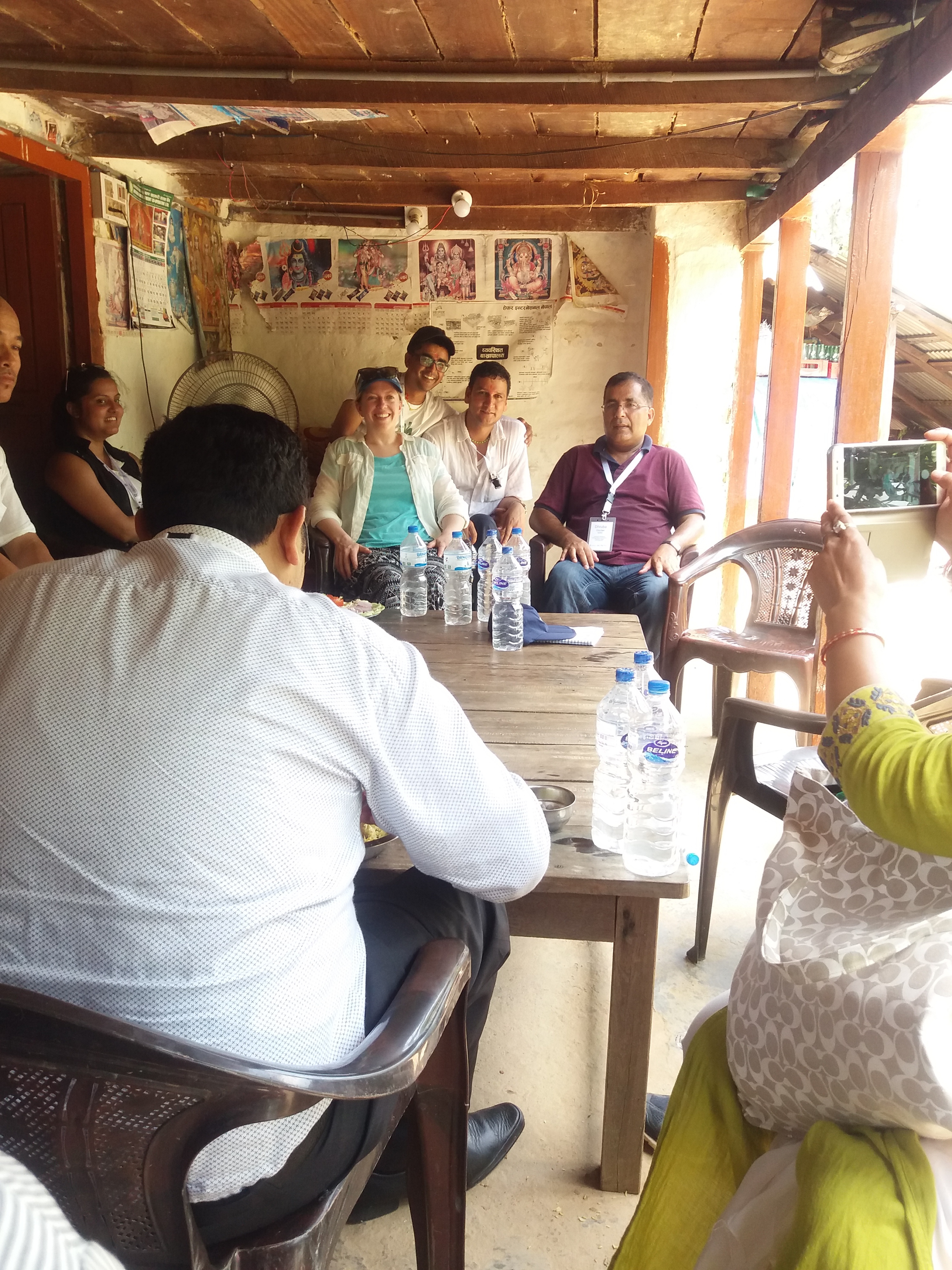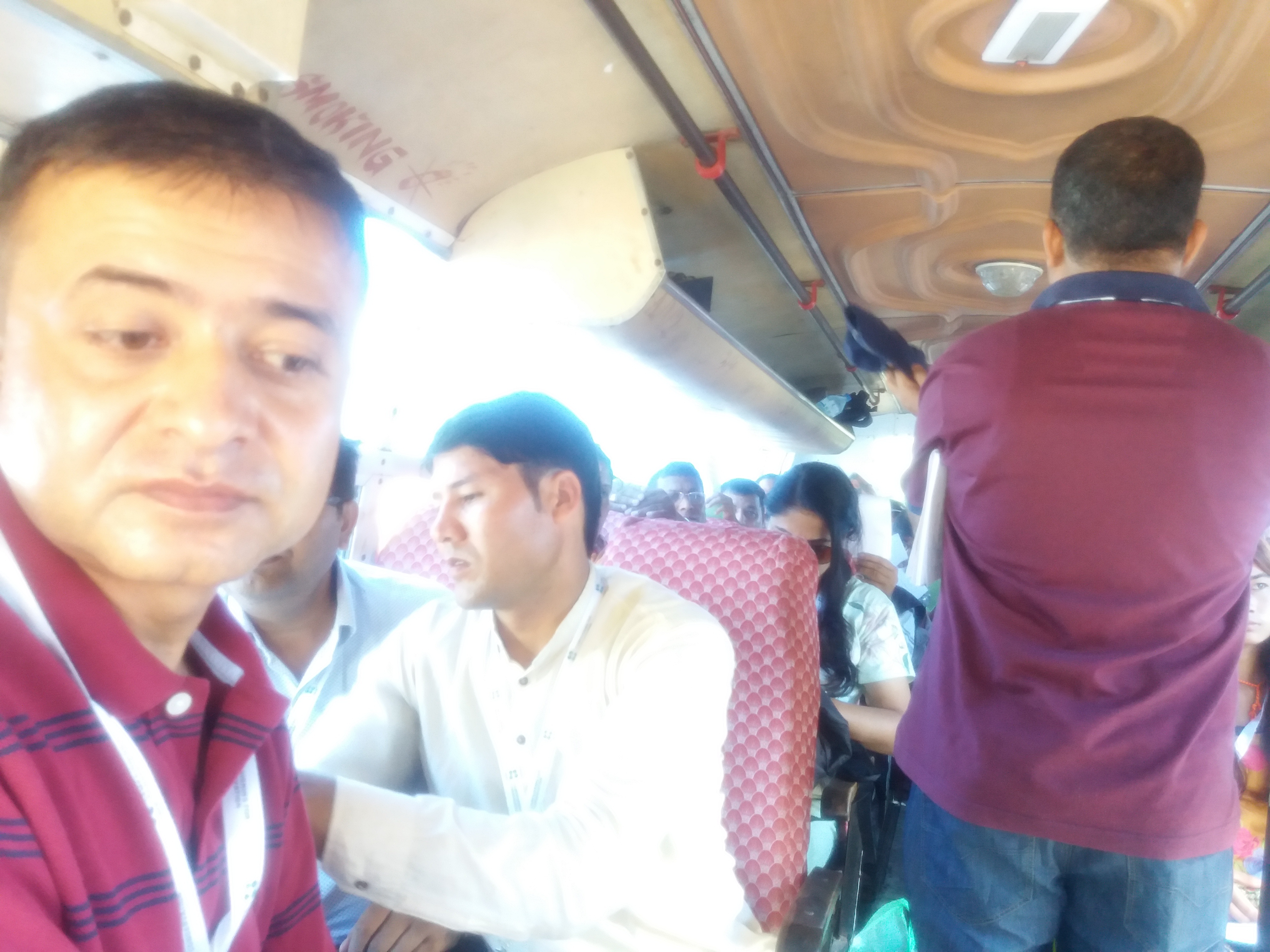The research phase of mini campaign has almost been completed. The questionnaire in hard copy and in survey monkey have been fixed. The information through KAP survey and focus group discussion have been collected. We are facing few difficulties during posting information in survey monkey. Thus please (probably AK), guide to complete this task.
Thank you & Regards,
BB Hamal & B.Khanal
Phidel, Bimala, and Daniela aren’t afraid to challenge the status quo in their communities — nor to challenge their perceptions of how to change it.
Hailing from rural farming communities in Kenya, Nepal, and Ecuador (respectively), in 2018 each female leader attended an intensive 10-day training in her country, hosted by Rare, to learn how to use and apply the principles of behavior-centered design (BCD) to social and environmental challenges facing her community. The training equipped each woman with a global theory of behavior change, social marketing tactics, quantitative and qualitative research techniques, and effective campaign design for her local challenges.
Following the training, Rare selected these three local leaders to join its delegation at the 14th global United Nations Biodiversity Conference (a.k.a., CBD COP14) held in Egypt in November. By training local leaders and bringing them to global forums to share first-hand experiences, Rare encourages and empowers local ‘disruptors’ to lead the changes they seek for their communities. In attending the 14th CBD COP, the local female leaders capitalized on the opportunity to share their local challenges — and their solutions — with a global audience (consisting mostly of government representatives alongside civil society, business, indigenous and local communities, youth, and others), and enhanced their networking, public speaking, and storytelling skills.
At the conference, Phidel, Bimala, and Daniela shared the proverbial stage with the launch of the Farming for Biodiversity report, published by Rare and IFOAM-Organics International, which unearths results of 338 community-led solutions to connect agriculture and biodiversity, sourced from across the world. In the foreword to the report, the UN Assistant Secretary-General, CBD Executive Secretary Dr. Cristiana Pasca Palmer stresses the importance of engaging local leadership in making change happen: “Community-led solutions that work on the ground and can be scaled and replicated elsewhere are at the heart of this change.”
Following the conference, we asked the local leaders to share what they plan to do with these new skills back home, and importantly, help us envision what a good life they help to create looks like. Here are their answers.
• • •
Phidel Hazel Arunga
Phidel Hazel and YPARD-Young Professionals’ Platform for Agricultural Development are making agriculture attractive to young people in Western Kenya. By introducing rural youth to entrepreneurial and environment-friendly farming practices, Phidel is opening doorways to employment opportunities and easing pressure from rural-to-urban migration — all while protecting the planet.
(On what she takes home with her): The training and event changed me. At the COP, I saw people sitting around a table, making decisions that will affect you directly. And I realized that if you don’t take part in these decisions, then your challenges and ideas won’t be implemented. [These events] reinforced my confidence, in myself and my work. I came away very confident in understanding an audience and targeting a message. One thing I took away, is that to believe in something, you have to follow it through… I now know that I can do this — I can believe in me.
(On how she envisions a better life): The future I want to make happen looks like this: youth have proper representation and seat at the table; and at the same time, create their own jobs, and their personal wealth, in a perfect environment. Even if I help to build a small community that can have that kind of life, that is an achievement — and it can have a replicative effect. Success attracts success.
• • •
Bimala Acharya Dahal
Seizing on the growing global trend to “go organic,” Bimala left her career in business and turned to organic farming. Catering to Kathmandu’s growing market for healthy products, she is growing the urban organic movement by offering trainings on rooftop farming. Now, Bimala is going national: By encouraging farmers in remote areas of Nepal to obtain organic certification, she is helping them tap into new income opportunities.
(On what she takes home with her): The training energized me to work with the local community, which I hadn’t thought to work with before. Before, I just thought about my work — my farmer’s market, my rooftop garden, my women’s group. Now, I want to replicate what I am doing in Kathmandu with rural farmers. I came back from the training, and event, and people start to look at me differently — with respect. Now they believe in me and what I am doing. This is a kind of behavior change.
(On how she envisions a better life): Recently, I read a UN report stating that small-scale farmers can feed the world. I believe that where there is no farming, there is no life. A better life is that the young people stay in Nepal and grow everything the Nepalese need. By building a system that values organic farming, I can then rejoice in the respect they deserve and the income from organic agriculture that will make them, and the world, rich and healthy.
• • •
Daniela Borja Kaisin
Daniela Borja is part of a rescue campaign for Ecuador’s indigenous seeds. On the producer side, the group supports farmers to act as “Guardians of the Seed,” increasing the number of available seeds. On the consumer side, Daniela and her team facilitate the development of a vibrant gastronomy based on traditional food products. With her Farming for Biodiversity campaign, Daniela is on a mission to make traditional crops the next big thing among the housewives of Quito.
(On what she takes home with her): Being surrounded by influential people, organizations, ideas, and decisions at the CBD COP, I was initially nervous and intimidated — I didn’t know how/if coming from a small organization I could contribute. But slowly, throughout the week, I realized that we are all humans, concerned about similar environmental issues and that it’s really important for decision-makers to hear about our experiences and practices at the local level. I left feeling empowered, knowing that my work is important and that what I learned from the training will make my work more effective and impactful. It gives me hope. I’m so inspired that I’m spreading the word about the training and sharing my learnings with everyone!
(On how she envisions a better life): I dream of an awakened community of people, who together care about our surroundings and each other. Conscious consumerism — urban gardeners are growing their food, communities are planting trees and protecting their water, networks of seed guardians are spreading throughout Ecuador and the world…and generally speaking, people are connected, partnering for good, and dreaming together of a better life, regardless of how far apart we may seem.
Join us for the 7th webinar of the Ecosystem-based adaptation (EbA) in the agricultural sectors webinar module. Climate change and climate variability are
threatening the functioning of forest ecosystems and their services. This in turn negatively affects the production and utilization of wood and non-wood forest
products. According to FAO, forests directly contribute to the livelihoods of more than 1.6 billion people and the State of the World’s Forests (2018) estimates
that around 40 percent of the extreme rural poor live in forest and savannah areas. Further to this, more than 75% of the world’s accessible freshwater for
agriculture, domestic, urban, industrial and environmental use comes from forests.
Forests help to deliver clean and reliable water supplies and protect against landslides, erosion and land degradation. They provide employment, offering a range
of livelihood and income generation opportunities through the supply of products for household use or sale. Forests also enhance the habitat of aquatic and
terrestrial species providing a home for more than 80 percent of the world’s terrestrial biodiversity. Sustainably managing forests can reduce carbon emissions
while at the same time increasing their carbon sink potential.
Forest managers will need to “hedge their bets” by managing forests for a wide range of climate scenarios. Adopting “no regrets” options that are consistent with good
practices of having both adaptation and mitigation benefits are necessary. Ecosystem-based adaptation offers an opportunity to conserve, restore and
sustainably manage forest ecosystems, and it provides both adaptation and mitigation benefits.
This webinar seeks to identify ecosystem-based approaches, tools and methods to promote the implementation of EbA in managing forests and degraded lands
while improving livelihoods; share lessons learned including good practices generated from the past and ongoing experiences; and identify opportunities and
challenges for scaling up EbA.
Presentations and Speakers:
Approaches for ecosystem based adaptation in forestry
Simmone Rose, Forestry Officer (Climate change and Bioenergy), FOA, FAO
Ecosystem-based adaptation (EbA) has been defined as an overall strategy that integrates the use of biodiversity and ecosystem services to help people adapt
to the adverse impacts of climate change. It includes the sustainable management, conservation and restoration of ecosystems to provide services that help
people adapt to both current climate variability, and climate change. The presentation will highlight climate change adaptation through the management of forests
and trees. Such approaches can diversify options – for the forest ecosystems themselves and for the livelihoods depending on them, and thus build resilience
to climate change. The importance of appropriate legislation, policies and governance structures to support the implementation of EbA approaches in forestry
will also be addressed.
Ecosystem-based Adaptation in Practice: lessons from the mountains
Andrew Taber, Senior Forestry Officer, FOA, FAO
Ecosystem-based Adaptation (EbA) can be a compelling approach to build both environmental and societal resilience in ecologically degraded ecosystems with
high levels of poverty. The presentation will introduce two examples from mountain regions drawing on the experiences of The Mountain Institute, IUCN, and
its partners. In the Himalayas, the restoration of fragile highland forests by mountain communities is being advanced through the cultivation of high-value
medicinal and aromatic plants on degraded lands. In the Andes, agropastoralists are using ancient water management techniques and the latest science to
improve camelid production and protect the environment. In both cases, restoration of forest and other ecosystems are being promoted, natural hazard risks
reduced, water resources improved, and livelihoods for impoverished communities bolstered. Constraints and enabling conditions to support such approaches
will be discussed.
Ecosystem-based Adaptation experiences in agroforestry and forest ecosystems in South America
Karen Podvin, Programme Officer, IUCN
The presentation will introduce examples from agricultural and forest ecosystems drawing on the experiences of two collaborative projects in South America.
In Ecuador, the comprehensive approach of implementing a variety of measures as an EbA package include agrobiodiversity, water conservation, ecotourism and
sustainable goat management. The presentation will emphasize good practices in agrobiodiversity through training in integral farm planning and management with an
EbA approach through “Field Schools for Farmers”. The second example will draw on experiences from Chile with an example of how science-based knowledge and
evidence on the protective role of native forests can support planning and decision-making processes. These experiences show the need for focusing EbA on a landscape
approach ‒forests and other (eco)systems‒ including participatory approaches and strengthening natural resource governance, enhancing livelihoods, and the need
of robust evidence to inform planning processes.
When? 23rd October 2018
Time? 14:30– 16:00 CEST (UTC +2)
To join us, we invite you to register here and to join on the day of the webinar here.
For further information on the “Scaling-up of Adaptation in the Agricultural Sectors (SAAS)” webinar series, please contact Selvaraju.Ramasamy@fao.org or Manar.Abdelmagied@fao.org.
Kind regards,
FAO Climate and Environment Division (CBC)
The video that was produced by the Deutsche Welle film crew during our workshop in Kapilvastu is now online and has been screened in their global TV program Global Ideas, which is being watched by 157 Million people worldwide.
Extremely proud of all of you - you are all movie stars now! Madhu Sudan Gautam BB Hamal Jagriti Ishwor Malla Maharup Khatri Sangam Sherpa Chetana Shahi Sunita Chand Subash Belbase
Please share this widely with your colleagues, friends and partners.
Click the screenshot below or follow this link to watch the video: https://www.dw.com/en/in-nepal-puppets-teach-eco-friendly-farming-methods/a-45251532
कृषिमा अाश्रीत मानिसहरूकाे दैनिक जीविकाेपार्जन नगदे तथा खाद्यान्न बालीमा भर परि रहेकाे छ । बदलिंदाे समयमा अाधुनिक प्रबिधिअनुसार ब्यवसायीक खेती प्रणालीकाे अावश्यकता भइसकेकाे र जलवायू परिवर्तनमा बाेट बिरूवाकाे उत्तीकै याेगदान छ । संक्षिप्तमा महत्व ।
१. अार्थिक महत्व २. पाैस्टीक महत्व ३. पर्यावरणीय महत्व ४. धार्मिक महत्व (यी महत्व हुदाँ हुदै कम खनजाेत गर्ने बाली भएकाेले यस ले जलवायु परिवर्तन मा समेत याेगदान दिने भएकाेले यसकाे ठाउँ अनुसार ब्यापक प्रचार प्रसार काे अभियान चलाउनु पर्छ) । नगदेवाली अन्तरगत अलैंची बालीकाे संभावना पनि त्यत्तिकै संभावना रहेकाे छ ।
Due to popular demand, here our campaign song from Nepal to listen to - and the lyrics in English, Nepali and transcription (for English-speakers to sing along). Enjoy!
https://soundcloud.com/rarec4c/c4c-kapilvastu-campaign-song-nepal
Zero tillage, our choice – Organic farming is everyone’s voice
Beans, lentils, ginger and turmeric we do produce,
To increase our livelihood is our campaign boost
Zero tillage, our choice,
Organic farming is in everyone’s voice
Kitchen gardens everywhere is our campaign,
Healthy life, healthy mind are our aim
Zero tillage, our choice,
Organic farming is in everyone’s voice
Let us save our forests together,
Everyone move ahead in the campaign as they are our treasure
Zero tillage, our choice,
Organic farming is in everyone’s voice
Terai, hills and mountains we have in our nation
By empowering the female farmer, lets empower their station
Zero tillage, our choice,
Organic farming is in everyone’s voice
Crop rotation and integrated farming are the techniques to pursue,
Shedding the conventional farming method, we should do
Zero tillage, our choice,
Organic farming is in everyone’s voice
If we want, we can grow gold in this land,
The only thing remaining is to move forward holding our hand
Zero tillage, our choice,
Organic farming is in everyone’s voice
Sing-along version for English speakers
Verse 1
(Simi, Channa, Adhuwa, Besar Uthpadan ho hamro)…..2
(Aye arjan ra bridhi garne abhiyan xa ramro)……..2
(Sunya jotai hamro rozai jaibik kheti sabaiko sochai)…….. chorus 2
jaibik kheti sabaiko sochai….1
Verse 2
(Ghar ghara ma karesa bari abhiyan xa hamro)……2
(Socha jiban uccha bichar udhesya xa ramro)……..2
(Sunya jotai hamro rozai jaibik kheti sabaiko sochai)…….. chorus 2
jaibik kheti sabaiko sochai….1
Verse 3
(Ban jungle bukshya rokna sabai jana jutau)……2
(Yo abiyan agi badau koi pani naxutau)……………….2
(Sunya jotai hamro rozai jaibik kheti sabaiko sochai)…….. chorus 2
jaibik kheti sabaiko sochai….1
Verse 4
(Himal pahad terai ma basobas xa hamro)……………..2
(Mahila krishak aghi bade hunthyo sarai ramro)……………….2
(Sunya jotai hamro rozai jaibik kheti sabaiko sochai)…….. chorus 2
jaibik kheti sabaiko sochai….1
Verse 5
(Lagau sathi chakriya bali uthpadan ho ramro)………..2
(Purano bidhi tyagi laune udhesya xa hamro)……….2
(Sunya jotai hamro rozai jaibik kheti sabaiko sochai)…….. chorus 2
jaibik kheti sabaiko sochai….1
Verse 6
(Daju bhai didi baini hathma hath milai)…………..2
(Hamri deshma sun falxa re hamile ni chahey)………….2
(Sunya jotai hamro rozai jaibik kheti sabaiko sochai)…….. chorus 2
jaibik kheti sabaiko sochai….1
Sunya jotai hamro rozai jaibik kheti sabaiko sochai)…….. chorus 2
jaibik kheti sabaiko sochai….2
Nepali version
सुन्य जोताइ हाम्रो रोजाइ, जैविक खेती सबैको सोचाइ
सिमी, चना, अधुवा, बेसार, उत्पादन हो राम्रो
आयार्जन मा ब्रिधी गर्ने अभियान छ हाम्रो
सुन्य जोताइ हाम्रो रोजाइ
जैविक खेती सबैको सोचाइ
घर घरमा करेशा बारी अभियान छ हाम्रो
स्वछ जीवन उच्च बिचार उदेश्य छ राम्रो
सुन्य जोताइ हाम्रो रोजाइ
जैविक खेती सबैको सोचाइ
बन जंगल भुछ्य रोक्न सबैजना जुटौ
यो अभियान अघी बढाउ कोही पनि नछुटौ
सुन्य जोताइ हाम्रो रोजाइ
जैविक खेती सबैको सोचाइ
हिमाल पहाड तरायिमा बसोबास छ हाम्रो
महिला क्रिशक अघी बडे झनै हुन्थ्यो राम्रो
सुन्य जोताइ हाम्रो रोजाइ
जैविक खेती सबैको सोचाइ
लगाउ साथी चकृया बाली उत्पादन हो राम्रो
परानो बिधी त्याग्न लाउने उदेश्य छ हाम्रो
सुन्य जोताइ हाम्रो रोजाइ
जैविक खेती सबैको सोचाइ
दाजु भाई दिदी बहिनी हात म हात मिलाएे
हाम्राइ देश म सुन फल्छ रे हामीले नै चाहे
सुन्य जोताइ हाम्रो रोजाइ
जैविक खेती सबैको सोचाइ
We had been in the in a training of CAMPAIGNING FOR CONSERVATION in Kapilvastu district of Nepal. The 2 weeks residential training was tightly scheduled starting from as early as 8:30 AM to as late as & 7:30 PM which could mean being involved 11 to 12 hours a day. Due to the ingredients of fun and joy intermingled in the course modality with wonderful facilitation from Ms. Kate and Ms. Ann from RARE, Konrad from IFOAM and similarly fine coordination of Mr. Dhruba and Mr. Madhu of NDRC the training achieved its intended target. Before we were involved with the puppets we had already had 1 field trip to the project site for the practicum on quantitative and qualitative data collection on the third day.
Days 1 to 4: The first day, second day and fourth day dealt with Social Marketing, Theory of Change and Marketing strategies related contents on respective days. The fourth day was for the registration in the interested group for materials preparation hence we had already had our names in the puppet groups viz Ishwor Malla BB Hamal Maharup Khatri Sunita Chand and Ms. Maya
Day 5: The plots had to be prepared on the day finalizing the characters. The puppet show group brought some of the prepared materials demonstrated by the trainers after which brainstorming began. Improvisation technique was undertaken to create some interest in the plots thought of. At the end of the day, the members of the group drew the attention of the other trainees when ventriloquism and role play was exercised. A common consensus was drawn to finalize the characters and prepare the script.
Day 6: It was an off day so the group could not meet each other among ourselves so we had plenty of time to make individual preparation. On the day some of us visited Lumbini: the birthplace of Gautham Buddha
Day 7: The day was for a visit to organic farms and visit ginger processing unit during which not much could be done on puppets in group works so again the group member had to spire with the different ideas which were to be suggested on the following day while the other sessions would be ongoing. The script for the puppet was in progress.
Day 8: The sessions on organic agriculture were conducted. On the day the puppet makers were contacted who were supposed to arrive the following day. The first draft of the script for the puppet show was finalized. The doll makers were met who were consulted to prepare the puppets and the two doll makers were supposed to work on the characters.
Day 9: The session of organic accreditation and guarantee systems were dealt due to which the organics related topics were understood for which the puppet show got some more ingredients. The initial draft of the script for the puppet show was finalized and little role play was done so as to get the preliminary impression. The puppets designs were prepared of which only one character got finalized since the ladies had little idea on puppet making. The first puppet was of a little school girl. The script was again tested and the 4 characters were supposed to be a girl, a woman, a monkey and a cow for which the dialogues were again improvised and were sent for the correction of the script.
Day 10: The tenth day was for preparing 3 more puppets of which 2 were animal and one was human: the mother. The seamstresses were asked to prepare for the mother puppet as it would be faster then the cow was sketched out for the puppet design. The puppet for monkey got rejected as the size got wrong and afterward its appearance was compromised while trying to improve. The other groups from billboard, songs, posters and sermon sheets got involved for the stage preparation and drawing of the backdrop scenes of the puppet show. At the end of the day during dust, one of the colleagues suggested that the eyes were shrewd so they were again retouched with her assistance and the mother and the daughter characters looked very compassionate than angry or frowned. This was a very critical observation from our fellow participants. The children came to the training venue for the testing the puppet script and practice the show. The children liked the plot of the puppet show hence the script was finalized and the dialogues were rehearsed with plain reading, vocalization, characterization and role play. Among the children, the narrator was found to be shy but with little encouragement and support he dared to speak up few words and little more exercise was yet to be done to overcome his embarrassment making him bolder.
Day 11: While other materials were being prepared filming, interviewing, paintings, and rigorous logistic arrangement were being done our puppet maker was busy accomplishing the sewing of Chunkey the monkey for which we made the sketches of the character. During the entire operation, two crew stayed with the seamstress so that it does not go wrong. The children were supposed to come for the final rehearsal. with the puppets in the stage prepared hence the puppet was done by the time school children were for the final rehearsal. The children rehearsed with puppets, with the mikes in their hands and then in the stage. On the end of the day, every things were packed to carry to the community for the final show.
Day 12 (The Show Day): When we arrived at the program venue the rumors were all over that 4 puppets will perform the show. The 5 children who played the puppets were ready to welcome their puppet friends and all the other friends from theirs in the community and school were curious to see how the new guests look like. The entire participants either helped with clearing the grounds or preparing the stage of arranging the sound system not forgetting the logistic arrangements. The curious school children had their terminal exam and they were determined to see how the puppet show looks after giving their exams. While the children were giving exams many guardians fled to the program venue and participated in the discussion boards, listened to the song prepared by the training group, and they even participated in music and dance programs. The puppet show began after the school children were done with their exams the school children came to see the puppet theater. As the stage of the puppet unveiled the narrator boldly announced the show with confidence (which was a huge improvement that the rehearsal period two days earlier) and the puppet popped up to act; the audience gleefully watched the show, the little girl puppet was much loved the school children seemingly nodded when she acted like wise and the curious eyes of the boys and girls were staring the notoriety of Chunkey the monkey. Likewise, the mothers and guardians of the children were watching with astonishment when a cow began a conversation with humans and wild animals alike. The message for conservation was very easily taken in by the children and adults alike in the 11 minute show and was applauded with loud cheers when all the puppets shouted the slogan of zero tillage. In the end, the children who played the entire show proudly bowed infront of their guardians and friends and the guardians and the friend of the actors were seen with the sense of pride and determination.
Learnings and Observations
Puppets are effective means of spreading out the messages for social marketing as they are very perceptive to children and their families/guardians; this was evident in the puppet show staged in Dohote of Arghakhachi Nepal where NDRC is implementing its project. The children can overcome their fear in very short time if they are fed in with courage and confidence; which was learnt for the experience of the little puppeteers in C4C in Nepal. Crafting a puppet show is a huge operation though it looks only a few puppets hanging with few people speaking their dialogues. Having no puppet makers (the ones who prepared were doll makers with no idea about puppets at all) in the district made made the participants more challenged and taught the new skill by learning by doing the process. We got to learn that team effort is really important for making a campaign success. Kate Mannle Ann-Kathrin Neureuther Konrad Hauptfleisch Grumpy Konrad Soma Rana Alok Shrestha Chetana Shahi Sangam Sherpa .
Click here to read our full Puppet show script.docx
Newsletter Issue 1, June 8-9:
Campaigning for Conservation kicks of and we take a first look into behavior change theory...
Newsletter Issue 2, June 10-11:
Participants apply their knowledge to conduct field research and analyze their data...
Newsletter Issue 3, June 12-13:
Participants start crafting their campaign materials, test them with a focus group of local farmers and visit farms in the upstream area of the Banganga river watershed. We were also visited by Dr. Elsa Nickel and Ruth Irlen from Germany's Environment Ministry BMU...
Newsletter Issue 4, June 15-16:
In the IFOAM - Organics International hosted Technical Training, participants learn about the history, standards, trade and governance systems behind organic agriculture...
Newsletter Issue 5, June 17-19:
Participants finalize & launch their campaign materials - including a puppet show performed under a mango tree and a song recorded at a local studio to be played on Kapilvastu's radio stations. German TV station Deutsche Welle came along to film our campaign...
Highlights
- Participants conducted in-depth interviews & Knowledge, Attitude, and Practice (KAP) surveys in two communities within NDRC’s area of work.
- Participants used SurveyMonkey and transcription to record and analyze data.
- Participants discussed and analyzed the field data collected.
- Participants used data collected to create SMART objectives and the Audience Persona.
- Participants learned about the 4P’s of the Marketing Mix, messaging & the use of slogans.
Day 3 took participants to two communities NDRC is working with closely – Upper Dohorte and Lower Dohorte. Their mission was to get a better understanding of their campaign’s target audience, the farmers of the mountainous Banganga river watershed. Did they already know about the benefits of climate-resilient crops? Where they planting them? And which music do they listen to, which information sources do they trust?
Using the survey finalized on Day 2, participants conducted qualitative and quantitative research through in-depth interview questions and questionnaires. Exhausted from the trip but excited by all the new insights they gathered, participants then spent the afternoon documenting their field data by feeding it into SurveyMonkey and transcribing interviews.
On Day 4, the group created an audience persona of an archetypical farmer living in the watershed. In the afternoon, they learned about Marketing Strategies and the 4P’s of Marketing (Product, Price, Place & Promotion). The day concluded with a competition to create the best slogan for the materials that they will start producing on Day 5.
Highlights:
- Participants reflected on the farm visits and summarized advice to the four farms.
- Participants designed and discussed their own organic model farms.
- Participants were introduced to the history, principles and practice of organic farming.
- Participants learned about standards, certificates and Participatory Guarantee Systems in organic farming.
- Participants discussed current issues such as access to export markets, supply, demand and competition in the Southern Nepal region.
Day 7 was a free day for the group – but our participants were busy nonetheless: Catching up on email, other work items or networking with their peers. And preparing for the FIFA World Cup, of course. Watching football is serious business in Nepal.
On Day 8, we reconvened in the classroom to take a look at the history, principles and practice of organic farming. While all participants proved highly knowledgeable in the area, there was still a lot to learn and discuss. Who would have thought, for example, that Nestle is selling organic products, too? Or that organic farms can be vast, measuring 2,000 hectares and look just like conventional ones.
Day 9 gave participants ample opportunity to apply what we learned on the previous day to their own contexts. In the afternoon, a lively world café gathered to tackle some of the most pressing issues organic agriculture is facing in Nepal.
Highlights:
- Participants started developing campaign materials, including a billboard, a campaign song, a sermon and a puppet show.
- Participants tested their materials with a focus group composed of five local farmers.
- Participants took in focus group feedback for the continued development of their materials.
- Participants visited five farms in the upstream area of the Banganga watershed, reflecting on the practices they observed and engaging in discussions with farmers.
On Day 5 participants were honored to welcome Dr. Elsa Nickel, who leads the Directorate General for Nature Conservation and Sustainable Use of Natural Resources at Germany’s Ministry for Environment (BMU) and Ms. Ruth Irlen, the Ministry’s policy officer for REDD+ and forestry at the workshop. Our funding partners stayed with us for the entire day to take in all the action – from the early morning when teams started drafting their materials together with a local Guru, artist and musician, until the evening when they received feedback from five local farmers.
On Day 6, Konrad Hauptfleisch of IFOAM – Organics International joined us as leader of the technical training on organic agriculture. Together, we embarked on an adventurous trip up the sloping roads taking us closer to the top of the Banganga watershed. Here, the group split into five teams, each visiting a different household to take in the rich diversity of every farm.
3rd day
As the day passes, despite of a bit increase in temperature, the level of curiosity, excitement, energy & stamina was not reduced rather it was increasing day by day. With the early beginning of day, we recalled and revised the contents like: concept model, theory of change, etc. from previous day. We discussed about the different methods of research. we were able to know that there are mainly 2 types of research:
1. Qualitative Research: Research based on qualitative data collection which are based on the nature & quality rather than the quantity. For example: information about the pattern of agricultural practices i.e. traditional or modern
2. Quantitative Research: Research based on quantitative data. For example: information on number of animals they rear.
After that, total group was divided to sub groups with 2 individuals in each sub group for KAP survey and 2 seperate individuals are assigned for in- depth interview with the set of questionaire to every sub groups The site was again divided into 2 sub- site: Lower Dothe & Upper Dothe . so, after we had our breakfast and short discussion we departed from Gautam Buddha Hotel at 9:15 AM and reached at the site, after an hour of travelling through bus. The site, Dothe where small community group resides and NDRC has been working since few years lies in Arghakhanchi district, a neighbouring hilly district of Kapilvastu near to the CHURE Conservation Area. The site was full of natural beauty which was rich in biodiversity with most part being covered by dense forest. As per our plan every sub group went to the respective site as they were assigned and did survey of one household per head. After about 2 and half hour of survey and interview we had a launch at 1:00 PM and after a bit rest we returned back to hotel and data entry was done from survey monkey application. At late noon, we welcomed our 2 guest from the Ministry of Environment, Germany.
Namaste and welcome to all who joined us for the training in Kapilvastu.
Especially to those early birds who already registered for the platform:
Ishwor Malla Maharup Khatri Chetana Shahi BB Hamal Delia Magdalena Shiguango Chimbo Subash Belbase Madhu Sudan Gautam
Let me know if you want to learn how to write your own blog posts to cover your stories & learning experience.We can do a little photo blog with your pictures too - I saw you've taken lots of them already
Here are some first impressions from today and yesterday:
Highlights:
- Participants create journey maps and explore the route they took in becoming sustainable land use advocates
- Participants were introduced to challenges and solutions at the project site: Jagadishpur wetland
- They learned key social marketing principles, as well as the value of Concept Modeling
- After studying NDRC’s Concept Model, participants started developing their own, adapted to their work
- Participants were introduced to Rare’s Theory of Change
- Participants created a Benefit Exchange & learned basic quantitative and qualitative research techniques, including designing survey instruments
- Participants were introduced to Survey Monkey
With the sun shining bright on Kapilvastu district, Campaigning for Conservation(C4C) celebrated its Nepal premiere at Gautam Buddha Hotel on Friday, 8th of June 2018. The training is part of eight workshops that aim at spreading innovative solutions based on social marketing insights and technical knowledge.
National Disaster Reduction Center (NDRC) had been selected as training host based on their outstanding success in last year’s Farming for Biodiversity: Solution Search contest, when they took home the Judges’ Choice Award from Bonn. Their solution has been spotlighted and celebrated at the 2017 International Climate Change Conference (UNFCCC COP23).
Twenty-nine Farming for Biodiversity campaigners traveled from all across Nepal to Kapilvastu district, where NDRC’s project site is located.
After getting to know one another through journey mapping, the participants jumped right into learning about the theories behind social marketing. Through lectures and team exercises they gained an early insight into concepts such as “Diffusion of Innovation” and the “Behavior Change Continuum”. Many had not heard of these concepts before, but all agreed that they will be useful for the work at their own sites.
Diving deeper into a practical example, Madhu from NDRC took us through the multiple causes of vulnerability the people at Jagadishpur wetland face. In response to these diverse threats, NDRC has introduced a range of solutions, from zero tillage agriculture to agroforestry, community-managed seed banks and early warning systems. A concept model helped us understand the various strategies and how they relate to the overall human wellbeing and conservation results NDRC aim to achieve here in Southern Nepal.
On Day 2, participants studied Rare’s theory of change and research methods – acquiring the tools that will help them design their model campaign over the next days of the training. After studying quantitative and qualitative research methods, participants are now all set to visit farmer communities to gather information on their target audience on Day 3.


